Djémila – Lost City Of The Ancient Kingdom Of Numidia
Jan Bartek - AncientPages.com - When Albert Camus (1913 -1960) wrote about Djémila, a ruined Roman city in the mountains of Northern Algeria, he said this beautiful long-abandoned place is inhabited by the wind alone.
Camus wrote in Noces (Nuptials) that when you walk among the city's ancient ruins, you can hear the wind which "pounces fitfully on the remains of the houses, on the immense forum that extends from the triumphal arch to the temple." He described the ancient lost city of the Numida kingdom as a "great cry thrown out by the lugubrious and solemn stones at the mountains, the sky, and the silence."
Ancient lost Roman city Djémila. Credit: Yves Jalabert - CC BY-SA 2.0
Today a dead city, Djémila was once a vivid place where people watched the theater and visited temples and basilicas. The sudden decline of Djémila remains a mystery. Still, archaeologists excavating at the site have discovered "broken statues, evidence of fire and absence of precious metals among the ruins suggest the city may have been pillaged." 1
But who could have destroyed this historical ancient city in North Africa?
Camus wrote about his experiences in Djémila in 1936, but it has taken scholars many years to learn about this place's history. Only recently have archaeologists uncovered the history of Djémila that, because of its unique adaptation of Roman architecture, became a UNESCO World Heritage Site.
The Berber City Cuicul In The Ancient Kingdom Of Numidia
Excavations revealed that Djémila was founded around 96 A.D. Its original Berber name was Cuicul.
The city, built about 900 meters (3,000 ft) above sea level, was part of the ancient Kingdom of Numidia.
"The first Algerian kingdom, Numidia, was established by Berber tribe chief Micipsa in 106 B.C. Soon after that, it fell under the rule of the Romans. For a brief period in the 5th century the Vandals, a Germanic tribe, invaded the kingdom but were pushed out by the Romans again. In the 7th century, the Arabs invaded North Africa, bringing with them a new religion, Islam. In Algeria they were resisted by a woman leader, Kahina, the high princess of a tribe supposedly converted to Judaism., but eventually the Berbers became a province of the Umayyad caliphate. The Arabs, however, remained largely an urban elite." 2
Ancient Roman Buildings Still Stand In Djémila
The structures in Djémila have withstood the test of time. When the Duke of Orléans visited the ancient city of Djémila in 1839, he found the triumphal arc so magnificent that he wanted to transport the monument to Paris. For unknown reasons, his project was abandoned, and the arch remained in the same place it has always been. Today, Djémila can boost by having some of the most extraordinary Roman architecture in North Africa.
Djémila's Roman theater. Credit: habib kaki - CC BY 3.0
The ancient ruins offer evidence Djémila was a city filled with activity. The city had its own Senate and Forum. "Around the beginning of the 3rd century, it expanded beyond its ramparts with the creation of the Septimius Severus Temple, the Arch of Caracalla, the market and the civil basilica." 3
"In the third century, the city numbered some then thousand inhabitants, who can be imagined going about their business, perambulating from their domus to the temples and the two covered markets, whose counters are still in place." 1
There are many Christian buildings in Djémila. Among them are a cathedral, as well as a church and its baptistry. Archaeologists have unearthed startling mosaics at the site, many of them depicting mythological tales and scenes of daily life. The city was abandoned after the fall of the Roman Empire around the 5th century and 6th century, but as mentioned at the beginning, there are also indications it was also pillaged. Perhaps some local tribes stole whatever they could after Djémila was abandoned by its residents.
Arc of Caracalla (Djemila). Credit: Yves Jalabert - CC BY-SA 2.0
Djémila means in Arabic the 'Beautiful One', and the name is suitable because the city is truly a Roman beauty. When Muslims reached Djémila, they respectfully abstained from building there. The ancient Roman ruins were preserved for future generations. One does not need to have much imagination to picture what the city must have looked like before being abandoned.
Djémila is an ancient Roman jewel in North Africa.
Updated on August 27, 2022
Written by Jan Bartek - AncientPages.com Staff Writer
Copyright © AncientPages.com All rights reserved. This material may not be published, broadcast, rewritten or redistributed in whole or part without the express written permission of AncientPages.com
Expand for references- Aude de Tocqueville - Atlas of Lost Cities: A Travel Guide to Abandoned and Forsaken Destinations
- "Algeria: From FLN to FIS and Beyond." Insight Turkey, no. 5 (1997): 119-27.
- UNESCO - Djémila
More From Ancient Pages
-
 Danger Lurking In The Woods – Strange And Unexplained Sightings – Part 2
Featured Stories | Jul 7, 2018
Danger Lurking In The Woods – Strange And Unexplained Sightings – Part 2
Featured Stories | Jul 7, 2018 -
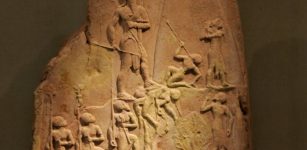 Did Climate Change End The Akkadian Empire?
Civilizations | Jul 17, 2019
Did Climate Change End The Akkadian Empire?
Civilizations | Jul 17, 2019 -
 On This Day In History: Sverre Sigurdsson Became King Of Norway – On June 29, 1194
News | Jun 29, 2016
On This Day In History: Sverre Sigurdsson Became King Of Norway – On June 29, 1194
News | Jun 29, 2016 -
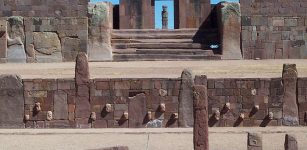 Superfood Of Ancient Andeans Reconstructed – What Helped To Fuel The Tiwanaku Civilization 2,500 Years?
Archaeology | Nov 30, 2021
Superfood Of Ancient Andeans Reconstructed – What Helped To Fuel The Tiwanaku Civilization 2,500 Years?
Archaeology | Nov 30, 2021 -
 How Greenland Got The ‘Wrong’ Name Thanks To Viking Erik The Red
Ancient History Facts | Mar 21, 2017
How Greenland Got The ‘Wrong’ Name Thanks To Viking Erik The Red
Ancient History Facts | Mar 21, 2017 -
 How Did Ancient Romans Grow Their Gardens?
Ancient History Facts | May 25, 2018
How Did Ancient Romans Grow Their Gardens?
Ancient History Facts | May 25, 2018 -
 Northern France Was Already Inhabited More Than 650,000 Years Ago
Archaeology | Sep 18, 2019
Northern France Was Already Inhabited More Than 650,000 Years Ago
Archaeology | Sep 18, 2019 -
 Lost Maya City Hidden In The Volcanic Lake Atitlán Explored By Underwater Archaeologists
Archaeology | May 4, 2022
Lost Maya City Hidden In The Volcanic Lake Atitlán Explored By Underwater Archaeologists
Archaeology | May 4, 2022 -
 The Nunnehi – Immortal Spirit People And Mysterious Protectors Of The Cherokee Nation
Featured Stories | Mar 21, 2018
The Nunnehi – Immortal Spirit People And Mysterious Protectors Of The Cherokee Nation
Featured Stories | Mar 21, 2018 -
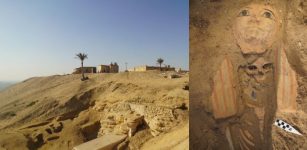 Ancient Egyptian Tombs With Stunning Trove Of Artifacts And Human Remains Unearthed In Saqqara
Archaeology | Jan 17, 2024
Ancient Egyptian Tombs With Stunning Trove Of Artifacts And Human Remains Unearthed In Saqqara
Archaeology | Jan 17, 2024 -
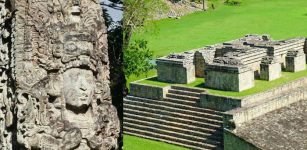 Secret Behind Ancient Durable Maya Plaster Discovered
Archaeology | Apr 21, 2023
Secret Behind Ancient Durable Maya Plaster Discovered
Archaeology | Apr 21, 2023 -
 On This Day In History: Battleship USS Maine Explodes And Sinks – On Feb 15, 1898
News | Feb 15, 2017
On This Day In History: Battleship USS Maine Explodes And Sinks – On Feb 15, 1898
News | Feb 15, 2017 -
 DNA From Doggerland That Separates The UK From Europe – New Study
Archaeology | Jul 20, 2020
DNA From Doggerland That Separates The UK From Europe – New Study
Archaeology | Jul 20, 2020 -
 On This Day In History: John Dee, English Mathematician, Occultist, Astrologer, Astronomer Was Born – On July 13, 1527
News | Jul 13, 2016
On This Day In History: John Dee, English Mathematician, Occultist, Astrologer, Astronomer Was Born – On July 13, 1527
News | Jul 13, 2016 -
 Mystery Of Ancient Beehive Tombs Around The World
Featured Stories | Feb 28, 2016
Mystery Of Ancient Beehive Tombs Around The World
Featured Stories | Feb 28, 2016 -
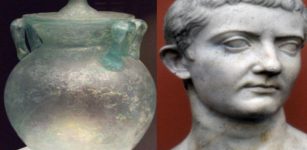 Flexible Glass – Lost Ancient Roman Invention Because Glassmaker Was Beheaded By Emperor Tiberius
Ancient Technology | Jul 27, 2023
Flexible Glass – Lost Ancient Roman Invention Because Glassmaker Was Beheaded By Emperor Tiberius
Ancient Technology | Jul 27, 2023 -
 The Hittites – Rise And Fall Of An Ancient Powerful Empire
History | Feb 18, 2019
The Hittites – Rise And Fall Of An Ancient Powerful Empire
History | Feb 18, 2019 -
 Florida’s Ancient Calusa Kingdom Developed Sophisticatedly Engineered ‘Watercourts’
Archaeology | Apr 1, 2020
Florida’s Ancient Calusa Kingdom Developed Sophisticatedly Engineered ‘Watercourts’
Archaeology | Apr 1, 2020 -
 The Anglo-Saxon Migration: New Insights From Genetics
Archaeology | Sep 21, 2022
The Anglo-Saxon Migration: New Insights From Genetics
Archaeology | Sep 21, 2022 -
 Sir Francis Walsingham: Spymaster, Politician And Trusted Adviser To Queen Elizabeth I
Featured Stories | Nov 25, 2019
Sir Francis Walsingham: Spymaster, Politician And Trusted Adviser To Queen Elizabeth I
Featured Stories | Nov 25, 2019



